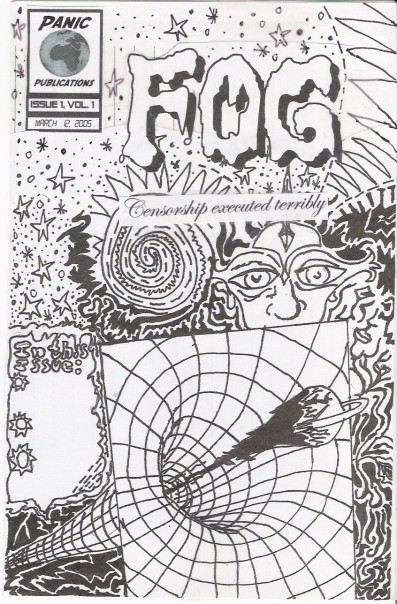
Fog Mag is a science, medicine, philosophy, and culture magazine developed and edited by David K. Lempert.
There is no acronym or deeper meaning to the name ‘fog’; I love the aesthetic of both the condensation phenomenon and the sound of the word itself.
Fog has existed in one form or another since I was in 2nd grade, when I used to draw single-panel cartoons called Fog à la a cruder version of Gary Larson's “Far Side” comic strip. The Fog brand continued in college as a ‘zine brandishing the accurate surtitle “censorship executed terribly.”

The first version of the Fog Magazine Online website premiered in early 2009. I developed the website with a college buddy of mine who shared my interest in philosophy, technology, and medical science. We hoped our articles would encourage better communication between the various parties who affect science and medical policy.
The current version of the Fog website has expanded towards the vision I have had for Fog since my childhood. In addition to philosophical and ethical content, I have also included sections of the website for my other interests. You can listen to the 100+ songs and mixes I have recorded over the past 10 years in the music section, read non-science related ideas and stories in the etcetera section, and read my descriptions of the various projects I’ve worked on in the projects section.
I share many designers’ admiration for minimalistic approaches to organizational design that leave a small footprint while communicating a unique and vivid style. Throughout the website, each color corresponds with a general category of articles. The 3 x 3 grid on the homepage (or list if you are viewing on mobile) automatically pushes the newest articles to the top left of the grid. The end result is an ever-changing mosaic whose colors provide simple navigation cues.
Assumptions:
My professional experience includes studying hippocampal-dependent recognition memory in an anesthesiology lab at UCSF, working as a science writer for a health information website, and working as an Emergency Medical Technician. I am currently a medical student at the University of Queensland, Australia.
You are welcome to view my CV or contact me at the email address listed at the bottom of this page.
“If we affirm one moment, we thus affirm not only ourselves but all existence. For nothing is self-sufficient, neither in us ourselves nor in things; and if our soul has trembled with happiness and sounded like a harp string just once, all eternity was needed to produce this one event - and in this single moment of affirmation all eternity was called good, redeemed, justified, and affirmed.”
-Fredrich Nietzsche, The Will to Power
“Whatever men [meaning humans] do or know or experience can make sense only to the extent that it can be spoken about. There may be truths beyond speech, and they may be of great relevance to man in the singular, that is, to man in so far as he is not a political being, whatever else he may be. Men in the plural, that is, men so far as they live and move and act in this world, can experience meaningfulness only because they talk with and make sense to each other and to themselves.”
- Hannah Arendt, The Human Condition
This website is programmed in php and marked up with HTML5/CSS3. In my latest revision of the back-end, I took great care in updating the view for mobile without relying on a cookie-cutter framework like bootstrap. This isn’t to say I did it all on my own; I solicited a lot of stackoverflow and css-tricks advice. I also validated the views with the W3C validator, which wasn’t so painful once I began using ids and classes correctly in my markup (hint: ids are for discrete elements, classes are for classes of elements… duh).
If you find any bugs, please , and I’ll try to fix it.
Published on December 31, 2008
Fog Mag > About